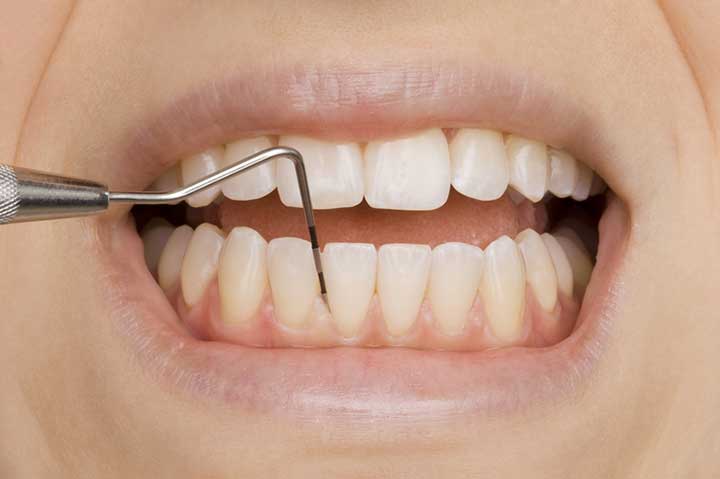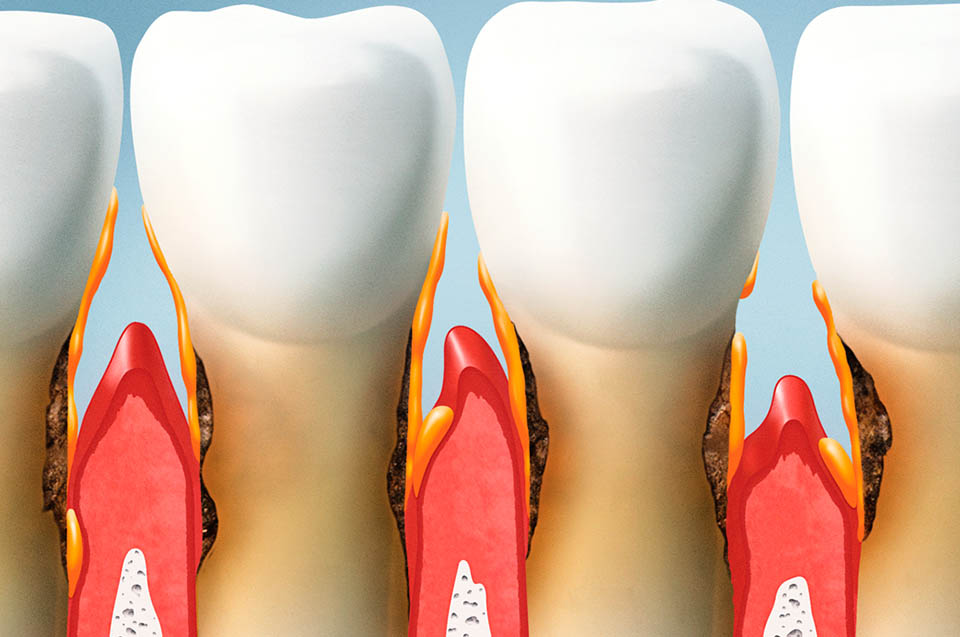
Periodontist is a gum disease which results in the loss of teeth and bone. The damage caused to the bone is irreversible, meaning it cannot be recovered.
That is why it is very important that gum problems are detected at an early stage to detain the loss of bone and slow down the disease before tooth loss begins.
Patients need to be conscious of the fact that if they do not go to the dentist to treat their gums, they could lose their teeth.
What are the signs and symptoms of periodontist?
- Most periodontal problems start with a rediness of the gums.
- The gums begin to swell and bleed easily when brushing your teeth.
- It can cause bad breath or halitosis.
- Causes gum recession.
- Teeth start to move.
Commonly known as pyorrhoea, causes irreversible damage to the bones that support our teeth and gums.
As it is a chronic and progressive disease if it is not treated it can get worse. For that reason, it is important to not only treat it at early stages but also to have regular periodontal check-ups every 6 months.
Healthy gums are not swollen, nor do they bleed or hurt.
Periodontogram
This is a graphical representation of the state of our gums. It is carried out using a periodontal probe. The results of this test are recorded in a periodontogram.
- Depth of periodontal pockets
- Gum bleeding
- Gum recession
- Degree of tooth movement
It is carried out at the beginning of periodontal treatments and in the successive periodontal checkups.
The periodontogram allows us to diagnose the level of gum damage and the bone loss of each supporting tooth. Comparing the obtained results allows us see the progress and give a more accurate treatment for our patient. It allows us to see the progress after treatment and then compare in successive maintenance sessions.
Scaling and Planning
After the diagnosis is registered in the periodontogram, the accumulated tartar is removed and the periodontal pockets treated. The scaling and planning is done as to remove the accumulated bacteria at both a supragingival level (above the tooth and above the gum), and also at a subgingival level ( above the tooth and inside the gum)
- The supragingival tartar, which is on top of the gum, is normally yellow, white in colour and is removed by ultrasonic dental cleaning.
- The subgingival tartar is not visible as it under the gums, it is normally brown or blackish in colour and is removed through scaling treatments.
Periodontal Check-ups

Once you have completed your periodontics treatment we recommend you have a 6 monthly check up to maintain your gums, and to avoid a reactivation of your periodontal disease.
It´s very important to control the state of your gums every few months.
In the periodontal check up we will carry out the periodontogram again to measure the periodontal pockets.
The dentist will compare his initial findings with the results obtained after treatment. The periodontal check-ups need to be carried out at regular intervals to maintain a patient´s oral health.
It also allows us to control the disease, and the early detection of receding gums.
Objectives of scaling and root planning
- Avoids bone loss that supports the teeth.
- Restores healthy gums.
- Reduces inflamation and bleeding gums.
- Reduces the amount of tartar that acumulates in the periodontal pockets
What is the main cause of periodontal disease?
Periodontist affects nearly 80% of the Spanish population, the main cause being bacterial plaque which if it is not moved calcifies and sticks to adjacent teeth and converts into tartar.
What are the other causes of periodontist?
In addition to bacterial plaque deposits , other influencing factors are.
- Lack of oral higiene, habits like smoking, genetics, hormonal changes, stress and breathing.
- Even some medicines, systemic illnesses and other disorders can cause periodontal disease.
These causes need to be controlled and treated by a periodoncist.
Can I smoke after having my gums treated?
Smoking has a negative effect on the treatment of periodontal disease.
The bacteria’s associated with smoking, appear in more abundance. And the tissue heals slower and worse because their defense mechanism has been altered.
The healing of deep periodontal pockets is worse in smokers and the bone damage is also greater.
In fact if you stop smoking before treating your gums you can significantly improve the results of your periodontal treatment.
Why is it important to move the tartar as soon as posible?

There are two phases to periodontal disease: gingivitis (swelling of the soft tissue around the teeth) and periodontitis (loss of soft tissue supporting the teeth).
Gingivitis is a mild form of periodontal disease, that causes swelling and bleeding of the gums.
Commonly known as pyorrhea, periodontist is a chronic and irreversible disease that affects the gums and supporting tissues of our teeth.
It initials starts as gingivitis and then progressively causes gum recession and loss of bone, therefore leaving the teeth without support subsequently causing them to move and eventually leading to tooth loss.
That is why it is very important for early detection to avoid possible bone loss in the teeth. In the most advanced stages of the disease it is very common for the periodontist to recommend extractions and the subsequent replacement of these teeth by dental implants.

